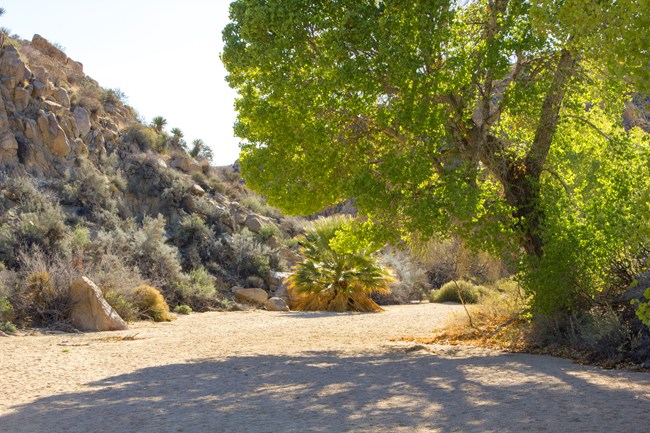
NPS Photo
Overview
Spring riparian areas in Mojave Desert Network parks are some of the most significant habitats for maintaining biological diversity and some of the most threatened habitats.
In these parks, as elsewhere in the arid west, land-use practices such as livestock grazing, surface water diversion, groundwater withdrawal, mining, and introduced invasive species have radically altered ecological processes and led to losses in riparian productivity and biodiversity. In many riparian areas, plant communities are now dominated by non-native tamarisk (Tamarix spp.), a woody plant that accesses groundwater more easily and tolerates saline soils better than native plant species.
A significant number of species of special concern are associated with riparian habitat in Mojave Desert Network parks, including the Southwestern willow flycatcher (Empidonax traillii extimus), least Bell's vireo (Vireo bellii pusillus), and the relict leopard frog (Rana onca).
-
How to Protect and Preserve a Desert Spring
Learn more about desert springs in the Mojave Desert, the life they support, and how we're monitoring them.
- Duration:
- 6 minutes, 8 seconds
Monitoring Objectives
- How stable are riparian plant communities through time as measured by species composition, abundance, and structure? Are major shifts in dominant vegetation observed?
- Is the areal extent of network park riparian plant communities declining?
- What are the trends in abundance and composition of targeted invasive plant species in riparian communities?
- Are changes in vegetation cover, composition, and structure correlated with long-term changes in discharge or stream flow rates?
- Are changes in native vegetation communities associated with changes in exotic plant species cover and species composition?
Reports and Publications
Monitoring protocols describe why and how we collect, manage, analyze, and report monitoring data about the network's Vital Signs. Each protocol consists of a narrative and an associated set of standard operating procedures (SOPs).Monitoring reports, as they are developed, will summarize data and findings from our Vital Signs monitoring activities and will also be available here.
Source: NPS DataStore Collection 4464. To search for additional information, visit the NPS DataStore.
Source: NPS DataStore Collection 7918. To search for additional information, visit the NPS DataStore.
Articles
Last updated: September 30, 2025

